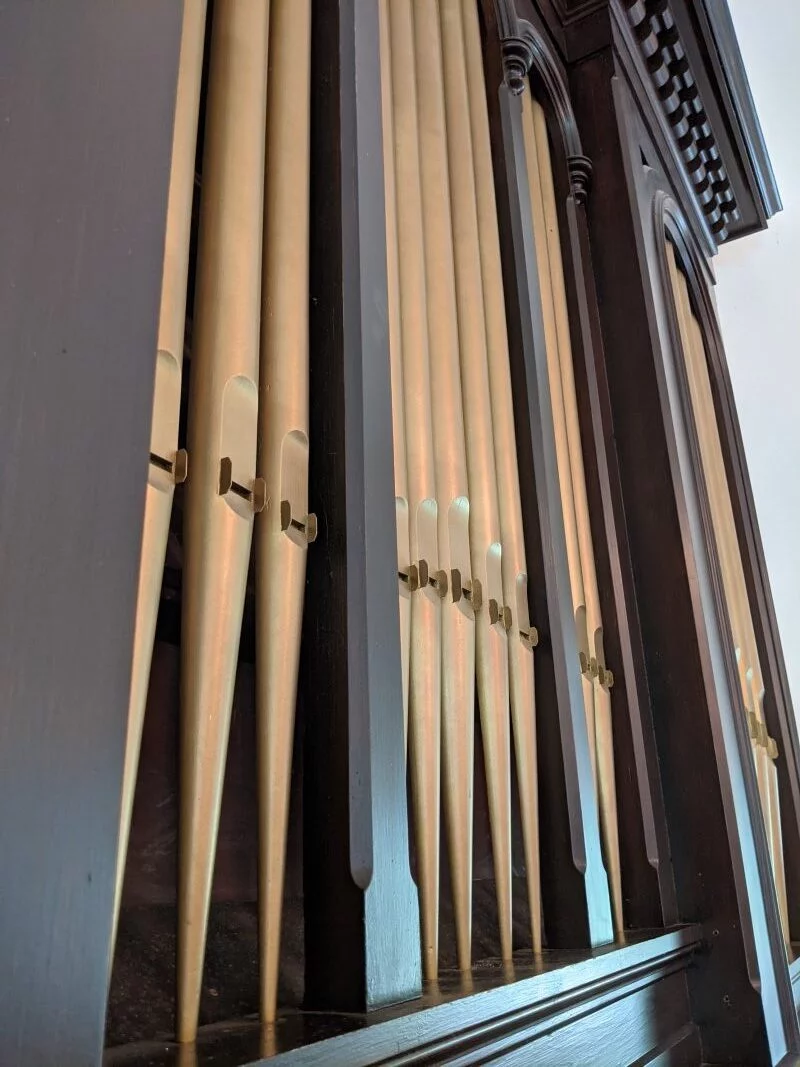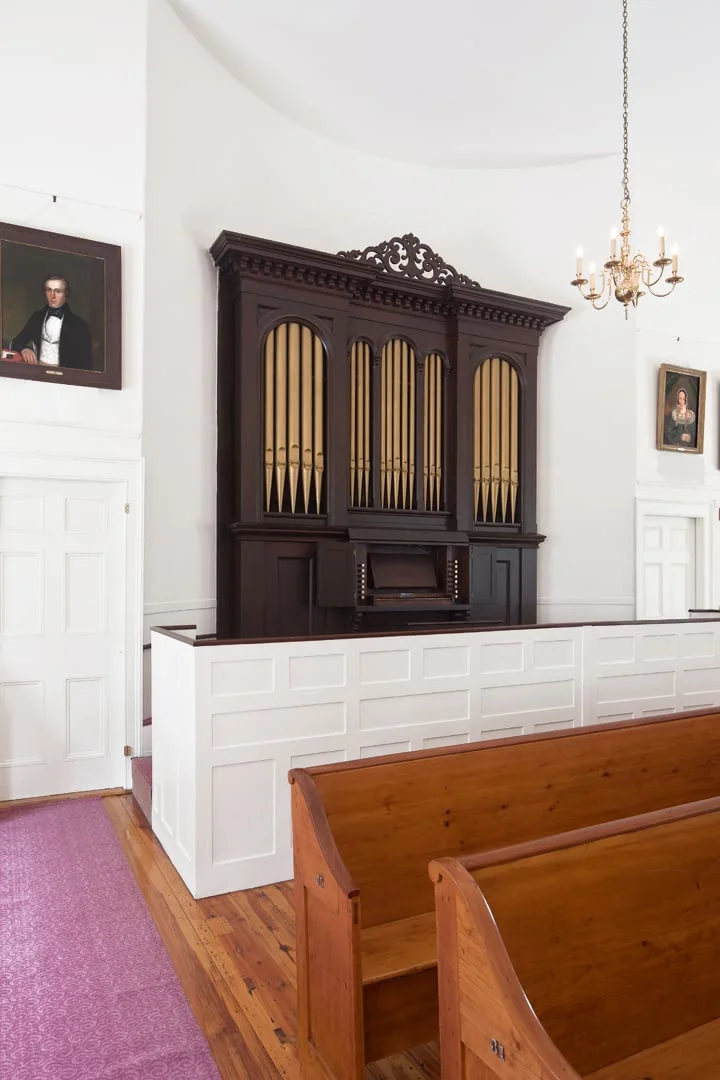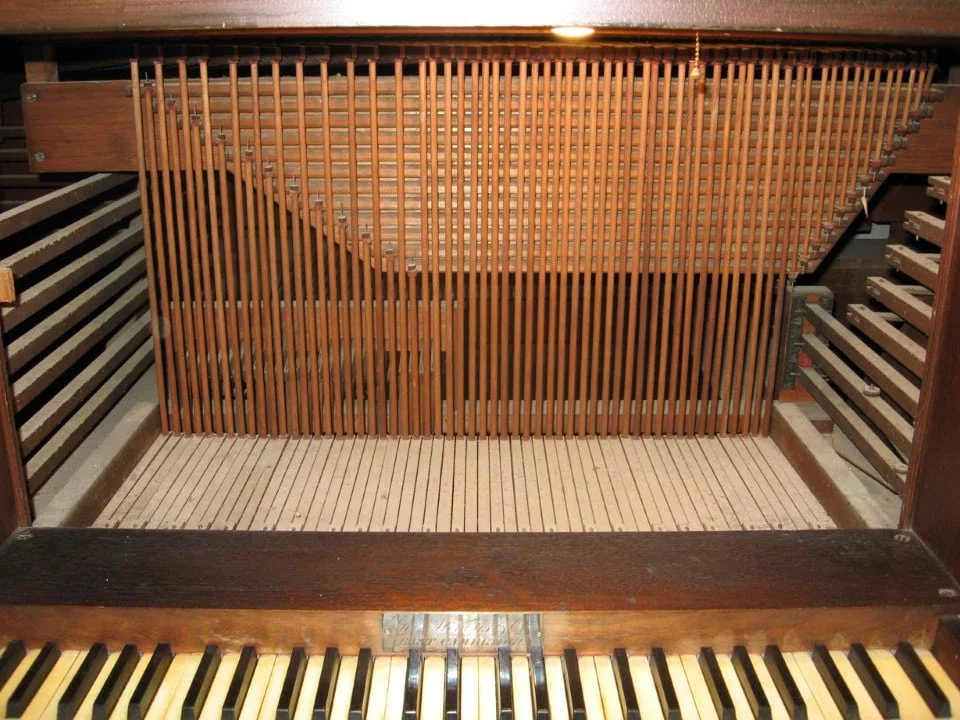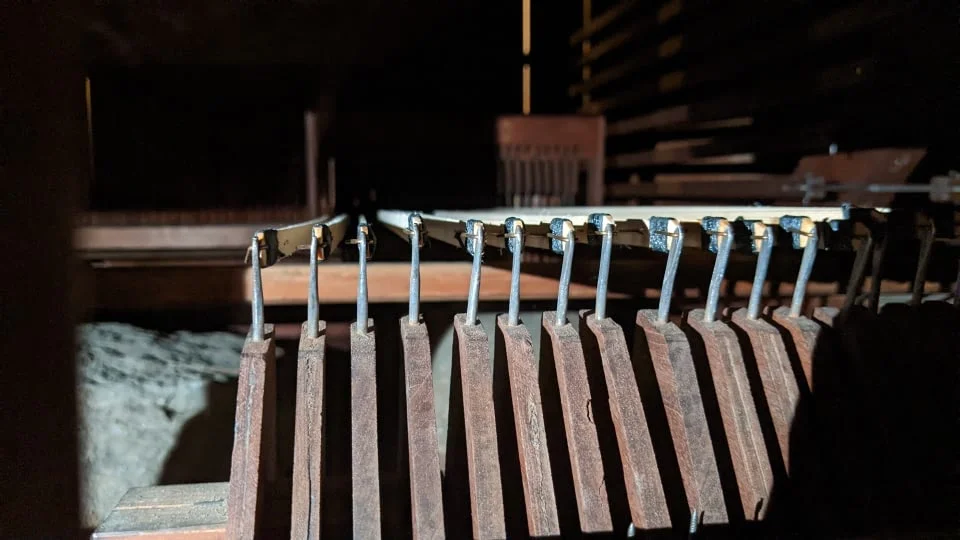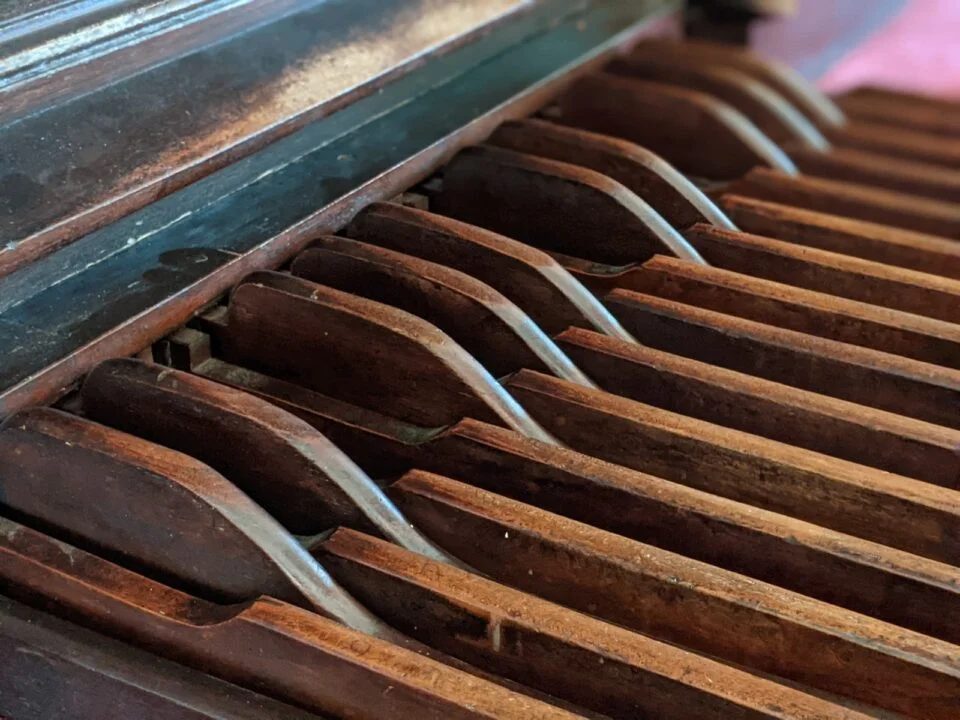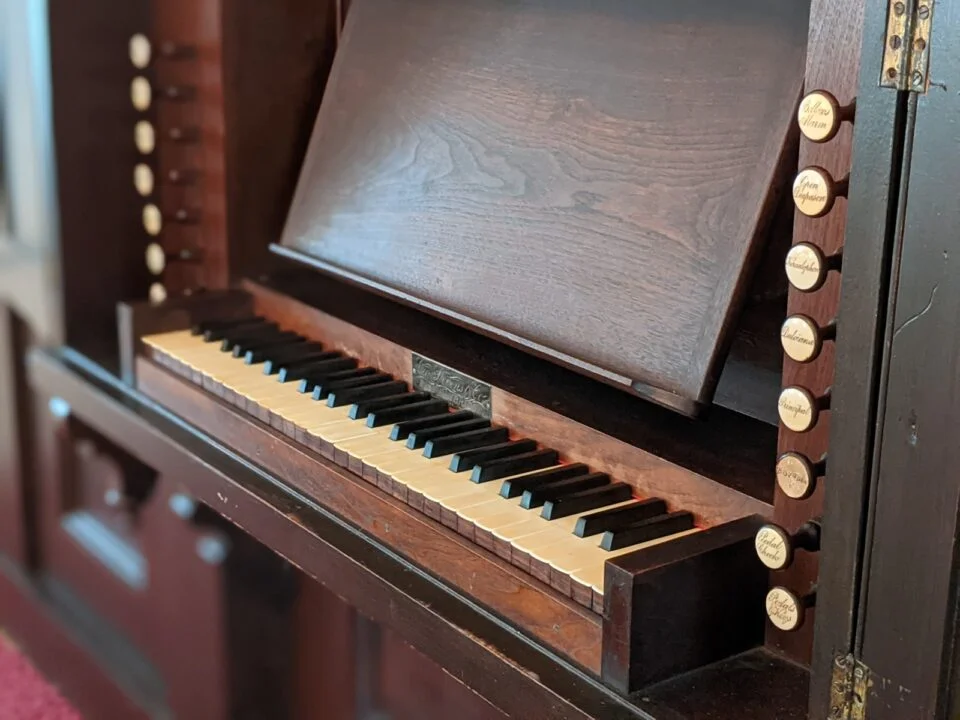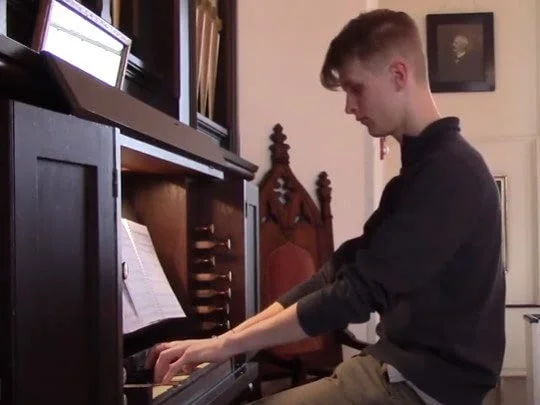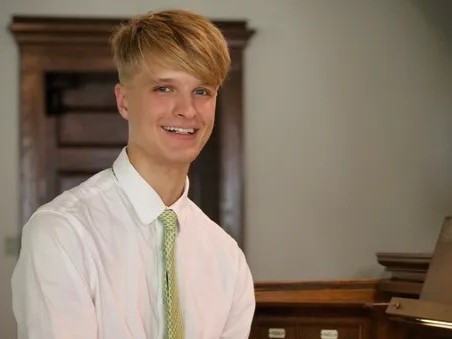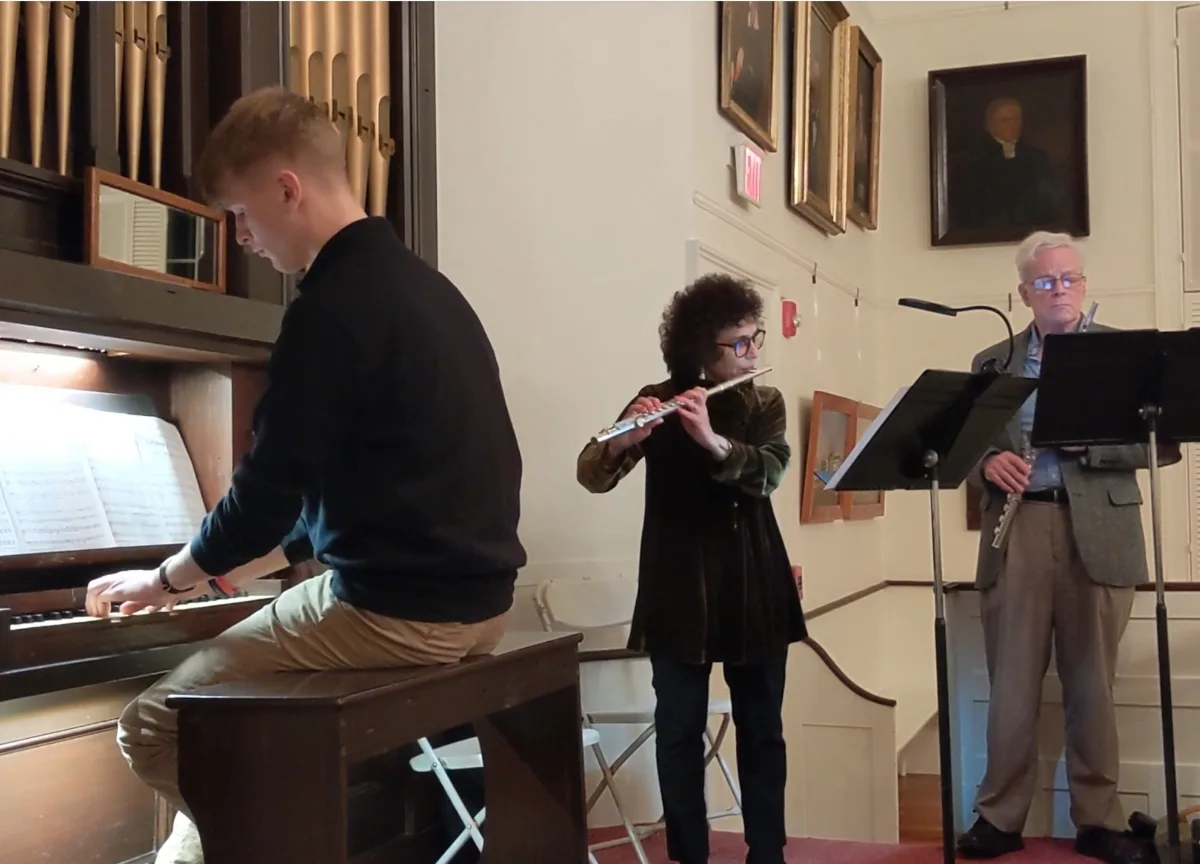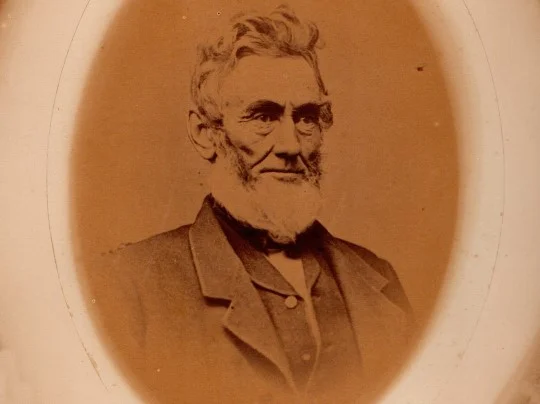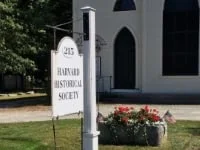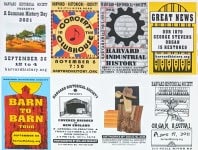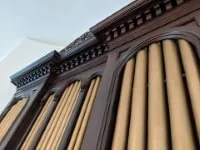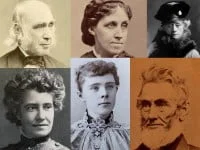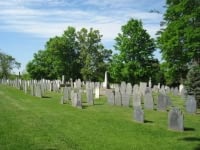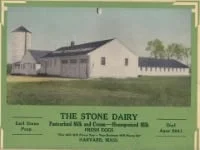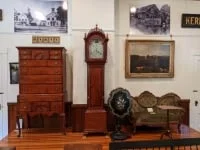The 1870 George Stevens Pipe Organ
Stewardship
In 1966, the Harvard Historical Society purchased the former Still River Baptist Church. With the purchase of the building came a pipe organ that dominates the western wall of the sanctuary.
The George Stevens organ was given to the Still River Baptist Society in 1870 by William Bowles Willard, an influential member of the community who, for 57 years, served as clerk for the Baptist Society. The organ, valued at the time at $1200-$1400, must have been a welcome and highly prized addition to the church to justify the sacrifices needed to accommodate it. Major renovations required the removal of the central portion of the choir loft to accommodate the organ. An apse was created around the organ, and the remaining section of the choir loft was walled off. This meant obscuring important architectural elements such as the great window overlooking the valley below and the gothic windows and upper sections of the front doors. The choir was lowered to the level of the organ, and the new configuration created a space with remarkable acoustic quality.
In 2006, the board of directors for the Harvard Historical Society decided to rejuvenate the organ, which is arguably the largest artifact in the collection, other than the Meetinghouse itself. The Andover Organ Company, which had once serviced the organ, did some repairs, and, after approximately 30 years of silence, the organ was heard by the public in a Society-sponsored concert featuring organist Michael Kleinschmidt, then organist for Trinity Church in Boston.
Discovery of a historical gem
The 2006 concert sparked renewed interest in the organ and brought to light some important issues. Time had taken its toll. After 140 years of dust, deterioration, and disintegration, the organ was nearing the end of its practical serviceability. Although it could be made usable for the short term with repeated and costly service, the organ would need to be serviced before each event and even then, it would not fully function. In order to play the organ in that condition, musicians would need to be flexible and sophisticated enough to work around non-functioning elements.
Michael Kleinschmidt said that the organ appeared to be in original condition. The Andover Organ Company noted the same and offered to do a formal survey of its condition. It is extremely rare to find an organ from this era that has not been altered over time. In fact, Donald Olson, then president of Andover Organ Company, described it as “kind of a miracle.” If a detailed survey confirmed Kleinschmidt’s observation, it would give wider historical distinction to the organ itself, apart from its significance in local history.
While the survey was being conducted, the Society sponsored another concert, this time featuring organ historian, author, and organist Barbara Owen. Owen is a former president of the National Organ Historical Society, has authored several books on New England’s organ history, and is a consultant on “matters pertaining to the organ.” She provided specific details of the organ and its construction and concurred that the organ’s condition appeared to be unaltered. Impressed with the possibility of seeing this unique organ restored and preserved Owen, offered her expert services to the Society for free.
The true significance of the organ was recognized when the survey from the Andover Organ Company revealed that the organ was intact and unaltered from its original installation. It was also determined that a complete restoration of the instrument could be accomplished; it would return the full splendor of its sound and make it viable for future generations to enjoy. As Donald Olson explained, “With the restoration, the organ becomes reliable and quiet and will sound wonderful. It would be an example of what the organ was like when new.”
In May 2010, Barbara Owen returned to perform a concert. On this visit, she bestowed a citation awarded by the Organ Historical Society to the 1870 George Stevens and Company organ, honoring its unique historical qualities. This citation directly acknowledges the historical value and authenticity of this instrument. As of February 2010, historical citations have been granted to 46 pipe organs in Massachusetts and 390 in North America. Of these, only three organs produced by the George Stevens Company have been so honored. In addition, the Harvard Historical Society organ holds the distinction of being the largest remaining single-manual organ produced by George Stevens. “Single-manual” means that the organ has only one keyboard, though this organ is unusually large and contains 585 pipes and 12 stops, each stop adding a unique tonal quality across the keyboard.
Restoring and preserving the organ
“What began as stewardship led to the discovery of a historic gem that should be restored and preserved.” Denis Wagner, former president of the Harvard Historical Society.
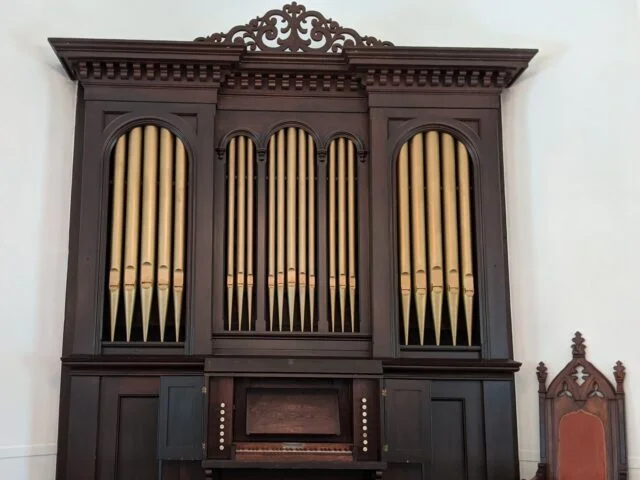
Given the historical significance of the organ in the Still River Baptist Church and the historical significance of the organ as a unique and rare example of organ history, the Harvard Historical Society committed to having the organ restored.
The scope of the restoration called for the organ to be completely dismantled, removed from its location, cleaned, restored, and reinstalled. Extensive work would be done to the keyboard, peddle board, trackers, the bellows-driven wind system, wind reservoir, and pipes, and a new blower installed. The organ was electrified in 1902 but can still be operated by its original hand pump.
The Harvard Historical Society would raise approximately $80,000 to complete the restoration, and the organ would be restored by the Andover Organ Company. In order to reach this goal, the Society solicited funds from private donors and through grant applications, and enhanced the funds through investment dividends and interest. The Harvard Historical Society also hosted a series of organ-accompanied silent films and “Playing with History” concerts to raise funds and awareness about the organ and its need for restoration.
Now that the restoration is complete, the exceptional sound of this organ, coupled with the superior acoustics and historical nature of the building, offers a unique and desirable venue for the Society to expand its musical program offerings. In a letter to the Society, Richard Jones, former minister of the First Parish Church in Bolton Mass., and former vice president of the Organ Historical Society wrote, “…one of the best things about the organ is the room it is in, I have rarely heard a better room for music. The sound of music in the Still River church is extraordinary…” Endorsements like this illustrate the potential for this organ and concert venue to serve as a significant asset in Harvard and surrounding communities.
Historical value and authenticity
On May 23, 2010, Barbara Owen performed on our 1870 George Stevens organ and presented a Historic Citation from the Organ Historical Society to recognize the significance of that organ.
 Barbara is a legend in the organ world with several books and many articles to her credit. She is an organist, historian, lecturer, past president of the Organ Historical Society, and librarian of the American Guild of Organists’ Organ Library at Boston University.
Barbara is a legend in the organ world with several books and many articles to her credit. She is an organist, historian, lecturer, past president of the Organ Historical Society, and librarian of the American Guild of Organists’ Organ Library at Boston University.
The citation is awarded by the Historic Organs Citations Committee of the Organ Historical Society to publicly honor pipe organs that possess special historical qualities. As stated above, our organ is one of only three organs built by a George Stevens company to receive this honor.
The Harvard Historical Society 1870 George Stevens & Company organ holds the distinction of being the largest remaining single-manual organ produced by George Stevens. In addition, the organ remains intact and unaltered from its original installation.
George Stevens (1803 – 1894) was a master craftsman and an important figure in American organ building. He also served as the third mayor of Cambridge, Mass. Stevens began his career as an apprentice for William Goodrich, a manufacturer of pipe organs in Cambridgeport. Goodrich is considered the father of the Boston school of organ building. After Goodrich died in 1833, Stevens bought the firm with fellow employee M.R. Gayetty and operated it as Stevens & Gayetty until 1839, when he formed his own company, George Stevens & Co. Following George’s retirement in 1892, two of his employees continued its operation as Gilbert & Butler until it was dissolved in 1902. Stevens built over 800 pipe organs during his career.


